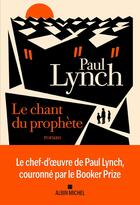-
Date de parution : 18/11/2017
-
Editeur :
Paul Holberton
-
EAN : 9781912168057
-
Série :
(-)
-
Support :
Papier
Résumé:
Superbly produced and splendidly illustrated, A Mystical Realm of Love is an important addition to the study of Pahari painting. A major work of scholarship, this welcome new publication also gives readers unparalleled access to one of the most outstanding collections of its kind.
Eva and... Voir plus
Superbly produced and splendidly illustrated, A Mystical Realm of Love is an important addition to the study of Pahari painting. A major work of scholarship, this welcome new publication also gives readers unparalleled access to one of the most outstanding collections of its kind.
Eva and Konrad Seitz have put together over many years an outstanding collection of some of the most famous and important of all 18th century Pahari paintings, including miniatures commissioned by the Rajput rulers of the Punjab Hill states (1650-1850).
This profusely illustrated book with meticulous research by J.P. Losty (curator emeritus British Library), designed by Misha Anikst and published by Francesca Galloway, London, gives the reader the opportunity to see the collection in its entirety.
Pahari paintings have been the focus of Eva and Konrad Seitz's collection since the couple first went to India in the late 1960s for Konrad to take up his position as a young diplomat at the German embassy in Delhi. They were drawn to Rajput paintings (Indian miniatures from the Hindu schools of North India and Rajasthan) which were then available in Delhi and Mumbai, and later in New York, as several princely collections were being dispersed. Eva and Konrad were part of a small group of pioneer collectors who recognised the importance of Rajput painting at a time when Mughal and Persian painting was far more sought after in the West.
The Seitz collection lures you into the enchanted domain of the Hindu gods, their epics and the never-ending trials and tribulations of divine and erotic love. What attracted and intrigued Seitz to Rajput paintings in particular was their ability to induce in the viewer a kind of poetic trance - which he saw as distinct from a more Western tradition of descriptive realism.
A Mystical Realm of Love is not only an opportunity to explore Pahari painting through one couple's lifelong passion and dedication to the subject, but represents a major addition to the scholarship through Losty's pioneering research. He attempts a new approach in documenting their role as parts of illustrated manuscripts of religious and poetic texts, and also puts forward a revised view of the development and chronology of Pahari painting.
Donner votre avis















